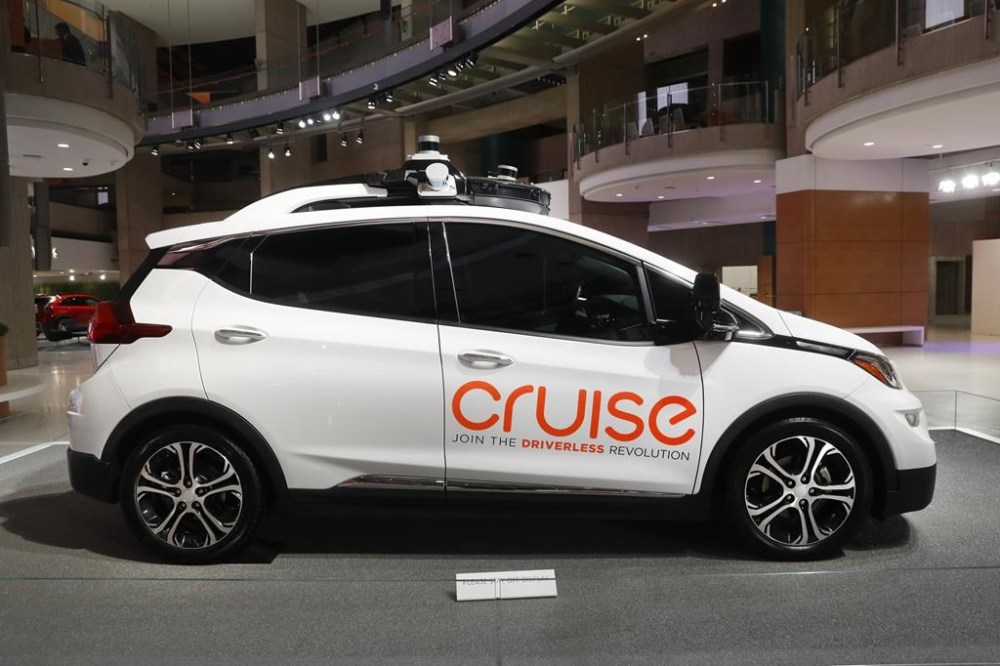GM’s Cruise to start testing robotaxis in Phoenix area with human safety drivers on board
Advertisement
Read this article for free:
or
Already have an account? Log in here »
To continue reading, please subscribe:
Monthly Digital Subscription
$0 for the first 4 weeks*
- Enjoy unlimited reading on winnipegfreepress.com
- Read the E-Edition, our digital replica newspaper
- Access News Break, our award-winning app
- Play interactive puzzles
*No charge for 4 weeks then price increases to the regular rate of $19.00 plus GST every four weeks. Offer available to new and qualified returning subscribers only. Cancel any time.
Monthly Digital Subscription
$4.75/week*
- Enjoy unlimited reading on winnipegfreepress.com
- Read the E-Edition, our digital replica newspaper
- Access News Break, our award-winning app
- Play interactive puzzles
*Billed as $19 plus GST every four weeks. Cancel any time.
To continue reading, please subscribe:
Add Free Press access to your Brandon Sun subscription for only an additional
$1 for the first 4 weeks*
*Your next subscription payment will increase by $1.00 and you will be charged $16.99 plus GST for four weeks. After four weeks, your payment will increase to $23.99 plus GST every four weeks.
Read unlimited articles for free today:
or
Already have an account? Log in here »
Hey there, time traveller!
This article was published 13/05/2024 (571 days ago), so information in it may no longer be current.
DETROIT (AP) — General Motors’ troubled Cruise autonomous vehicle unit said Monday it will start testing robotaxis in Arizona this week with human safety drivers on board.
Cruise said that during the testing, it will check the vehicles’ performance against the company’s “rigorous” safety and autonomous vehicle performance requirements.
Testing will start in Phoenix and gradually expand to Scottsdale, Tempe, Mesa, Gilbert, Chandler and Paradise Valley, the company said. The vehicles will operate in autonomous mode, but the human drivers will be ready to take over if needed as the company takes a step toward resuming driverless operations.

Human drivers are important in testing the vehicles’ performance “and the continuous improvement of our technology,” Cruise said.
Cruise suspended operations in October when one of its Chevrolet Bolt autonomous electric vehicles dragged a San Francisco pedestrian roughly 20 feet (6 meters) to the curb at roughly 7 miles per hour (11 kilometers per hour), after the pedestrian was hit by a human-driven vehicle.
But the California Public Utilities Commission, which in August granted Cruise a permit to operate an around-the-clock fleet of computer-driven taxis throughout San Francisco, alleged Cruise then covered up details of the crash for more than two weeks.
The incident resulted in Cruise’s license to operate its driverless fleet in California being suspended by regulators and triggered a purge of its leadership — in addition to layoffs that jettisoned about a quarter of its workforce — as GM curtailed its once-lofty ambitions in self-driving technology.
A new management team that General Motors installed at Cruise following the October incident acknowledged the company didn’t fully inform regulators.
Phil Koopman, a professor at Carnegie Mellon University who studies autonomous vehicle safety, said Phoenix is a good choice for Cruise to restart its operations, in part because it has less stringent regulations than the company faced in San Francisco.
The Phoenix area also has broad streets instead of narrow ones like San Francisco, and it has less traffic and fewer emergency vehicles, which caused problems for Cruise in San Francisco, he said.
“Good for them for being conservative,” Koopman said. “I think that in their position, it’s a smart move.”

